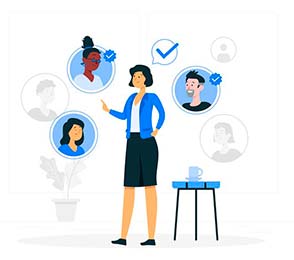Tone of voice is one of those subtle aspects of human communication that even humans get wrong. (I once found a path to détente between two warring roommates by getting them to declare their forays at humor. “Joke!”) Yet, according to articles If Our Gadgets Could Measure Our Emotions and In a Mood? Call Center Agents Can Tell in The New York Times, computers are getting better at detecting emotions beneath the words and gestures to be of value.
I think nuance, especially in terms of understanding humans, is an important lens for understanding Big Data opportunities. Often, the way we indicate intent, perspective, value, and interest is implicit. It’s also individual, which is why people who have known each other over decades often pick up on cues that are invisible to everyone else.
 Tone of voice. This is detailed in the second NYT article. Perhaps the most subtle claim is the ability to quickly categorize speakers according to their personalities.
Tone of voice. This is detailed in the second NYT article. Perhaps the most subtle claim is the ability to quickly categorize speakers according to their personalities.
Movement. As an example, almost everyone seen in videos of parking lot are moving with intent from or to specific cars. The movement of thief has a different pattern as he or she looks for the best opportunity to steal from a parked car. Presumably, something similar, seen in satellite images, would reveal the few vessels in the ocean that are manned by pirates, distinguishing them from ships used for cargo, transportation, pleasure, and fishing. It might even be possible to detect whether shoppers are looking for a gift, browsing, after a specific product, or shoplifting.
Gestures, microgestures, and body language. The first NYT article above references the growing sophistication of gesture detection (including infrared) available in the Xbox. Detecting boredom by heartbeat (questionable, according to studies on gamers) is a trivial example of what may be possible. Attention detection is moving forward, already available in some cars. On the leading edge (and definitely in the realm of nuance) is the development of automated microgesture lie detection systems.
There are other opportunities to gather massive amounts of data on people and discover indicators of intent, emotion, and subtle indicators of what’s going in inside their heads. Display and fashion, personal work environments, chains of online page selections, and community interactions (see especially the NSA’s use of metadata) all provide clues that become more obvious as our means to detect, collect, and sort communications, sales, video and other data grow. The BBC recently reported how data on crowd behavioral patterns is revealing new means of crowd control, so the work need not be limited to understanding individuals.
Much of the focus I’ve seen on Big Data and humans is tied to pattern recognition and the development of algorithms. This approach provides benefits in uncovering valuable information across systems, nature, and humans. In some cases, as with tone of voice, it can also reveal hidden meanings, first in general and then, as more data is collected, for individuals. In some augmented reality future, I could imagine couple counseling assist devices, providing explicit guidance.
I suspect, after patterns, expertise will come into play. Once I was stunned to see a writer, famous for detecting nuance, smear a fan’s glasses. The fan, it turned out, was obsessed with clear lenses, cleaning them with alcohol at least two times a day. No one else noticed this, just the writer. The best poker players pick up tells, and many security personnel sense emerging problems. It may already be going on, but I suspect studying society’s experts of nuance will offer rich new avenues that, combined with Big Data, will make much that is subtle more explicit. There are, of course privacy concerns, but it may be that in areas like public safety nuance detection will be more effective than new rules and extensive screening.



